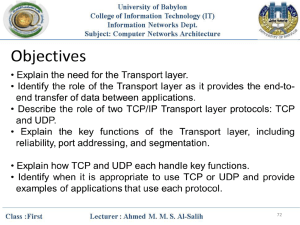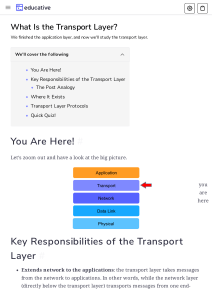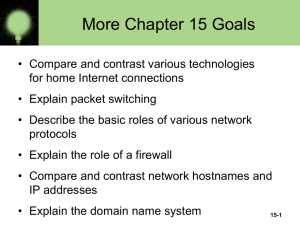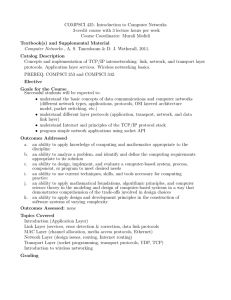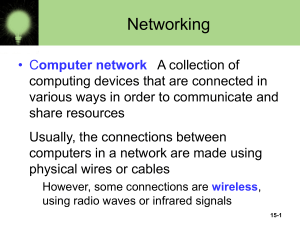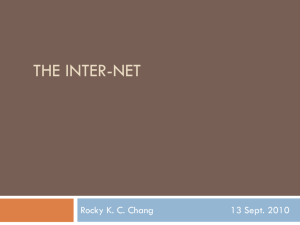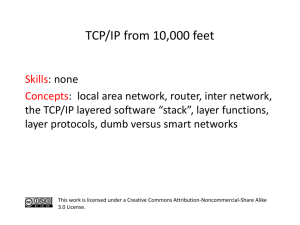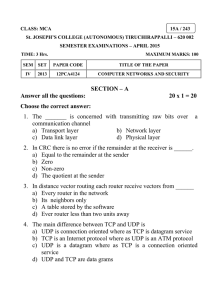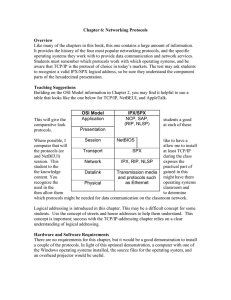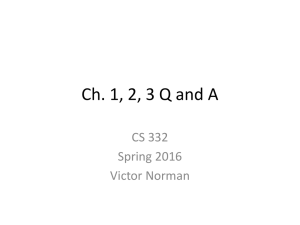Review Questions
advertisement
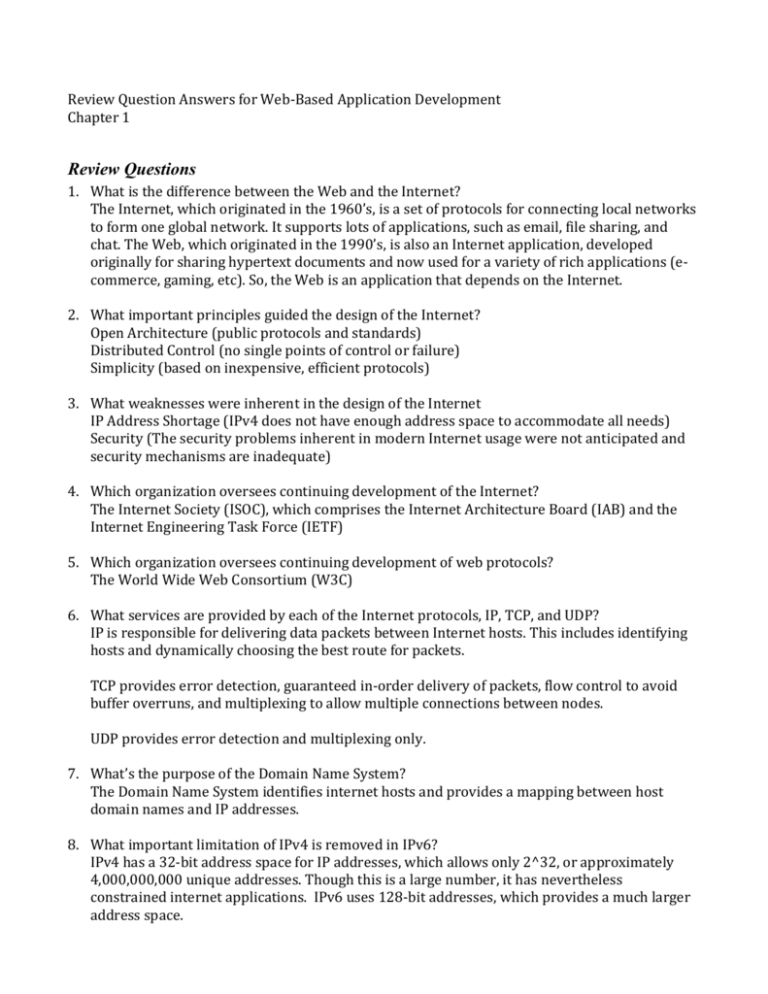
Review Question Answers for Web-Based Application Development Chapter 1 Review Questions 1. What is the difference between the Web and the Internet? The Internet, which originated in the 1960’s, is a set of protocols for connecting local networks to form one global network. It supports lots of applications, such as email, file sharing, and chat. The Web, which originated in the 1990’s, is also an Internet application, developed originally for sharing hypertext documents and now used for a variety of rich applications (ecommerce, gaming, etc). So, the Web is an application that depends on the Internet. 2. What important principles guided the design of the Internet? Open Architecture (public protocols and standards) Distributed Control (no single points of control or failure) Simplicity (based on inexpensive, efficient protocols) 3. What weaknesses were inherent in the design of the Internet IP Address Shortage (IPv4 does not have enough address space to accommodate all needs) Security (The security problems inherent in modern Internet usage were not anticipated and security mechanisms are inadequate) 4. Which organization oversees continuing development of the Internet? The Internet Society (ISOC), which comprises the Internet Architecture Board (IAB) and the Internet Engineering Task Force (IETF) 5. Which organization oversees continuing development of web protocols? The World Wide Web Consortium (W3C) 6. What services are provided by each of the Internet protocols, IP, TCP, and UDP? IP is responsible for delivering data packets between Internet hosts. This includes identifying hosts and dynamically choosing the best route for packets. TCP provides error detection, guaranteed in-order delivery of packets, flow control to avoid buffer overruns, and multiplexing to allow multiple connections between nodes. UDP provides error detection and multiplexing only. 7. What’s the purpose of the Domain Name System? The Domain Name System identifies internet hosts and provides a mapping between host domain names and IP addresses. 8. What important limitation of IPv4 is removed in IPv6? IPv4 has a 32-bit address space for IP addresses, which allows only 2^32, or approximately 4,000,000,000 unique addresses. Though this is a large number, it has nevertheless constrained internet applications. IPv6 uses 128-bit addresses, which provides a much larger address space. 9. What is the purpose of a TCP port? A TCP port is a number that identifies a particular service on an internet host, allowing the host to correctly handle simultaneous traffic for multiple internet applications. For example, most web servers (software) handle HTTP transactions arriving on port 80. 10. What are the roles of client and server in a client-server protocol? Clients initiate transactions to request a service from a server. Servers respond to client requests. Services provided can include providing documents or other data, executing transactions, recording data, etc. 11. What are the two parts of an HTTP transaction? First, the client sends a request for service to the server, then the server sends a response to the client. 12. What does statelessness mean in the context of HTTP? One HTTP transaction consists of one request followed by one response. Transactions are independent, and no memory (state) is maintained between transactions. This property helps to keep the protocol simple. Note that applications that are based on HTTP (such as web servers) often maintain state, but this is done outside of the HTTP protocol in the application layer. 13. What is a domain name? A domain name identifies an internet host (e.g., www.jmu.edu). Domain names become more specific from right to left. Top-level domain names (TLD's) are the right-most component of a domain name (e.g., .edu, .com, .net), and are limited in number to just a few. 14. Who decides what top-level domain names may be used? The Internet Corporation for Assigned Names and Numbers (ICANN) controls the use of domain names. ICANN historically operated under the authority of the US government, but is moving towards a more global mission. 15. What are the valid request methods in HTTP/1.1? GET (retrieve), POST (submit), CONNECT (create a TCP/IP tunnel), DELETE (delete a resource), HEAD (get headers only), OPTIONS (get a list of supported methods), PUT (replace a resource), TRACE (echo the request) 16. What are the five HTTP response code categories? 1xx (information), 2xx (success), 3xx (redirection), 4xx (client error), 5xx (server error) 17. What data are contained in HTTP headers? Headers contain meta-information, i.e., information about a request or response. Headers include information such as the request method, host name, HTTP protocol version, response status code, date, response type, and response length. 18. What is XML used for? XML is a meta-language that is used to create new languages (formal structures) for conveying information. XHTML is a strict version of HTML expressed as an XML document, for example.

